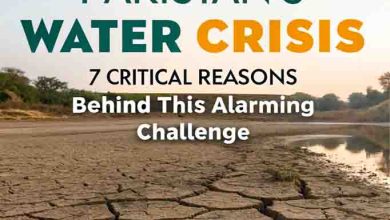World Bank approves $200m for flood recovery, resilience in Pakistan
Investments will focus on rehabilitation of infrastructure affected by 2022 devastating floods
WASHINGTON – As part of the program agreed with the Pakistan to respond to the devastating floods that hit the country in the summer of 2022 and build a climate-resilient Pakistan, the World Bank’s Board of Executive Directors has approved $200 million in financing to strengthen state capacities to deliver basic services and climate resilient rural infrastructure in the newly merged areas of Khyber Pakhtunkhwa, including investments for post-floods rehabilitation and reconstruction.
The Khyber Pakhtunkhwa Rural Investment and Institutional Support Project (KPRIISP) is the first phase of a multiphase programmatic approach that aims to increase access to resilient and reliable basic services for rural households in the Newly Merged areas of Khyber Pakhtunkhwa.
Under this first phase, investments will focus on strengthening state responsiveness and facilitating citizen-driven service delivery, as well as rehabilitate infrastructure affected by the devastating floods of summer 2022.
“KPRIISP aims to address development gaps in rural areas that are among the poorest in the country, directly benefiting around 5.5 million people by extending public service delivery systems, investing in basic infrastructure like water supply and sanitation, and boosting agricultural productivity and livelihood opportunities,” said Najy Benhassine, World Bank Country Director for Pakistan. “It will also support post-floods reconstruction and rehabilitation, while strengthening resilience to such climate-related shocks, particularly in the Newly Merged Districts of the Province.”
The project will support the extension of state systems to deliver public services in the Newly Merged Districts as well as investments in critical and basic rural infrastructure. It will also support emergency reconstruction and rehabilitation of flood protection infrastructure damaged by the 2022 floods. Infrastructure investments in water supply and sanitation, rural roads, agriculture, and irrigation will be done in a way to strengthen climate-resilience, in the face of increasing frequency and severity of extreme weather events in Pakistan.
“In addition to investments in critical infrastructure, this new project will provide conditional grants to village councils to finance local infrastructure priorities in line with community preferences and women’s priorities,” said Anna O’Donnell, Task Team Leader of the project. “It will also ensure that communities are involved in participatory planning, budgeting, monitoring, and improving social accountability systems, while focusing on institutional strengthening and capacity building of village councils.”







